Definition: What Is Digital Experience Monitoring (DEM)?
Digital Experience Monitoring (DEM) is a practice that involves monitoring and analyzing the end-to-end digital experience of users interacting with websites, applications, and other digital services. By examining performance, availability, and usability from the end user’s perspective, DEM provides insights into the performance, availability, and usability of these services from the perspective of the end user.
Why Use Digital Experience Monitoring?
Digital Experience Monitoring offers a multitude of advantages that make it a crucial practice for organizations. By implementing DEM, businesses can proactively identify and address issues before they impact users, ensuring a seamless digital experience. DEM also enables organizations to enhance user experiences by optimizing performance, usability, and overall satisfaction. With the help of advanced monitoring tools and analytics, businesses can efficiently troubleshoot problems, reducing downtime and improving productivity. Moreover, DEM provides valuable data and insights that drive data-driven decision-making, allowing organizations to align their digital initiatives with business objectives. Ultimately, DEM contributes to enhanced business performance by delivering exceptional digital experiences that drive customer satisfaction, engagement, and revenue growth.
Digital Experience Monitoring Benefits
Some of the key benefits of Digital Experience Monitoring include:
- Proactive Issue Identification: DEM enables organizations to identify and address issues before they impact end users. By monitoring various digital touchpoints, including networks, applications, and devices, DEM enables early detection of performance bottlenecks or potential disruptions.
- Improved User Experience: DEM provides insights into the end-to-end user experience, allowing organizations to understand how users interact with digital systems. By monitoring key metrics such as application response times, page load speeds, and transaction success rates, organizations can identify areas for improvement and optimize user experiences, resulting in increased satisfaction and engagement. Efficient Troubleshooting and Issue Resolution: DEM tools offer deep visibility into the underlying factors affecting digital experiences, such as network latency, server performance, or application errors. This enables IT teams to quickly diagnose and resolve issues, reducing mean time to resolution (MTTR). With proactive monitoring and real-time alerts, organizations can minimize the impact of disruptions on end users and maintain business continuity.
- Data-Driven Decision Making: DEM provides organizations with valuable data and insights for strategic decision making.. By analyzing user behavior, performance metrics, and trends, organizations can make informed decisions about infrastructure investments, application optimizations, and user experience enhancements. This data-driven approach helps align digital initiatives with business objectives and ensures optimal resource allocation.
- Enhanced Business Performance: Ultimately, DEM contributes to improved business performance. By delivering seamless and high-quality digital experiences, organizations can enhance customer satisfaction, increase user engagement, and drive revenue growth. Moreover, the ability to proactively monitor and resolve issues reduces downtime, boosts productivity, and enables employees to focus on core tasks, resulting in improved operational efficiency.
Types of Digital Experience Monitoring
Real User Monitoring (RUM) and Synthetic Monitoring are two crucial components in the field of Digital Experience Monitoring (DEM).
Real User Monitoring, as explained in the Sematext guide on real user monitoring, monitors the performance and behavior of real users accessing a website or application. It collects data from actual user interactions, such as page load times, network latency, and user actions, providing insights into how real users experience the system. RUM helps organizations understand the end-to-end user journey, identify performance bottlenecks, and optimize their digital experiences to meet user expectations.
Synthetic Monitoring, also known as Synthetic Transaction Monitoring, is described in the Sematext guide on synthetic monitoring. It involves generating artificial transactions that mimic real user behavior to simulate interactions. By executing these synthetic transactions from various locations, organizations can measure the performance and availability of web applications or APIs. Synthetic Monitoring identifies issues before they impact real users, provides baseline performance data, and allows for continuous monitoring and alerting.
In DEM, RUM and Synthetic Monitoring work together to provide a comprehensive understanding of the digital experience. RUM captures data from actual users, giving insights into real-world performance and user behavior. On the other hand, Synthetic Monitoring simulates user interactions under controlled conditions. It helps establish performance baselines, conduct regular tests, and identify potential issues before they impact real users Together, they ensure optimal performance and a seamless user experience.
The Sematext blog post on real user monitoring vs synthetic monitoring provides a detailed comparison between these two monitoring approaches, highlighting their respective strengths and use cases. Utilizing both RUM and Synthetic Monitoring is essential for a comprehensive understanding of the digital experience and to ensure optimal performance for real users.
Digital Experience Monitoring Challenges
Implementing a digital experience monitoring (DEM) strategy poses challenges due to the complexity of digital ecosystems, diverse devices and platforms, and the need for advanced monitoring tools. Additionally, ensuring data accuracy, privacy, and compliance adds to the complexity. To overcome these challenges, it is crucial to have a well-designed architecture, robust data management practices, and a commitment to staying updated with evolving technologies and user expectations. By prioritizing these factors, organizations can successfully implement an effective DEM strategy that maximizes the performance, availability, and user experience of their digital services.
How to Create a Digital Experience Monitoring Strategy
Creating a digital experience monitoring strategy involves defining clear goals, identifying critical user journeys, selecting suitable tools, establishing key performance indicators (KPIs), analyzing data, and continuously optimizing the strategy. By following this comprehensive approach, organizations can proactively address issues, optimize performance, and consistently deliver seamless digital experiences to their users.
Best Digital Experience Monitoring Tools & Software Reviewed
- Sematext
- Dynatrace
- Datadog
- AppDynamics
- SolarWinds Pingdom
- Splunk
- ThousandEyes
- New Relic
- Micro Focus
- Catchpoint
- Nexthink
- Aternity
1. Sematext
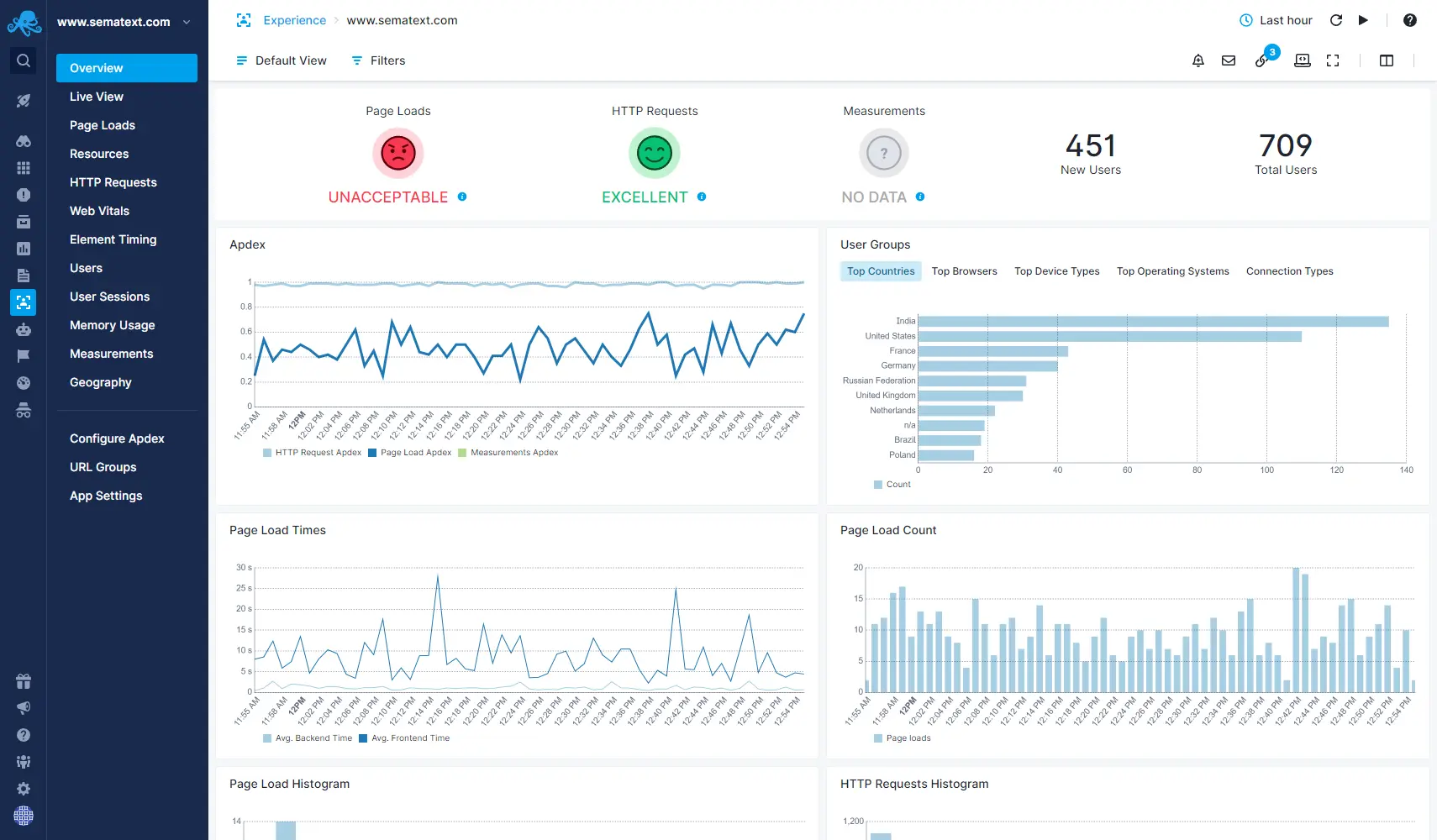
Sematext is a cutting-edge digital experience monitoring tool that specializes in measuring, monitoring, and enhancing… you guessed it – digital experiences. There are actually two complementary solutions, both part of Sematext Cloud. They can be used together or independently.
Sematext Experience is an advanced real user monitoring tool that grants you real-time visibility into your users’ experience and satisfaction with your website. This tool delivers detailed reports on website performance worldwide, allowing you to analyze data based on factors such as geographical location, device type, or connection speed. Want to see how Sematext Experience can even help speedup your WordPress website? Then check out the short video below:
Similarly, Synthetics, Sematext’s synthetic monitoring solution, leverages a global network of testing locations to collect lab data on your Core Web Vitals and a number of other metrics. This powerful tool provides comprehensive reports on critical resources such as website speed, uptime, error rates, responses from third-party APIs, SSL certificate expiry and alerting, and other essential metrics. Additionally, Synthetics enables you to benchmark your website against competitors, identify areas for performance improvement, and optimize your overall website performance.
Pricing: Sematext offers flexible pricing for diverse monitoring needs. Synthetic Monitoring starts at $2 per HTTP monitor, while User Experience Monitoring begins at $9/month. Free plans are available for Infrastructure and Log Monitoring. Free trial available.
2. Dynatrace
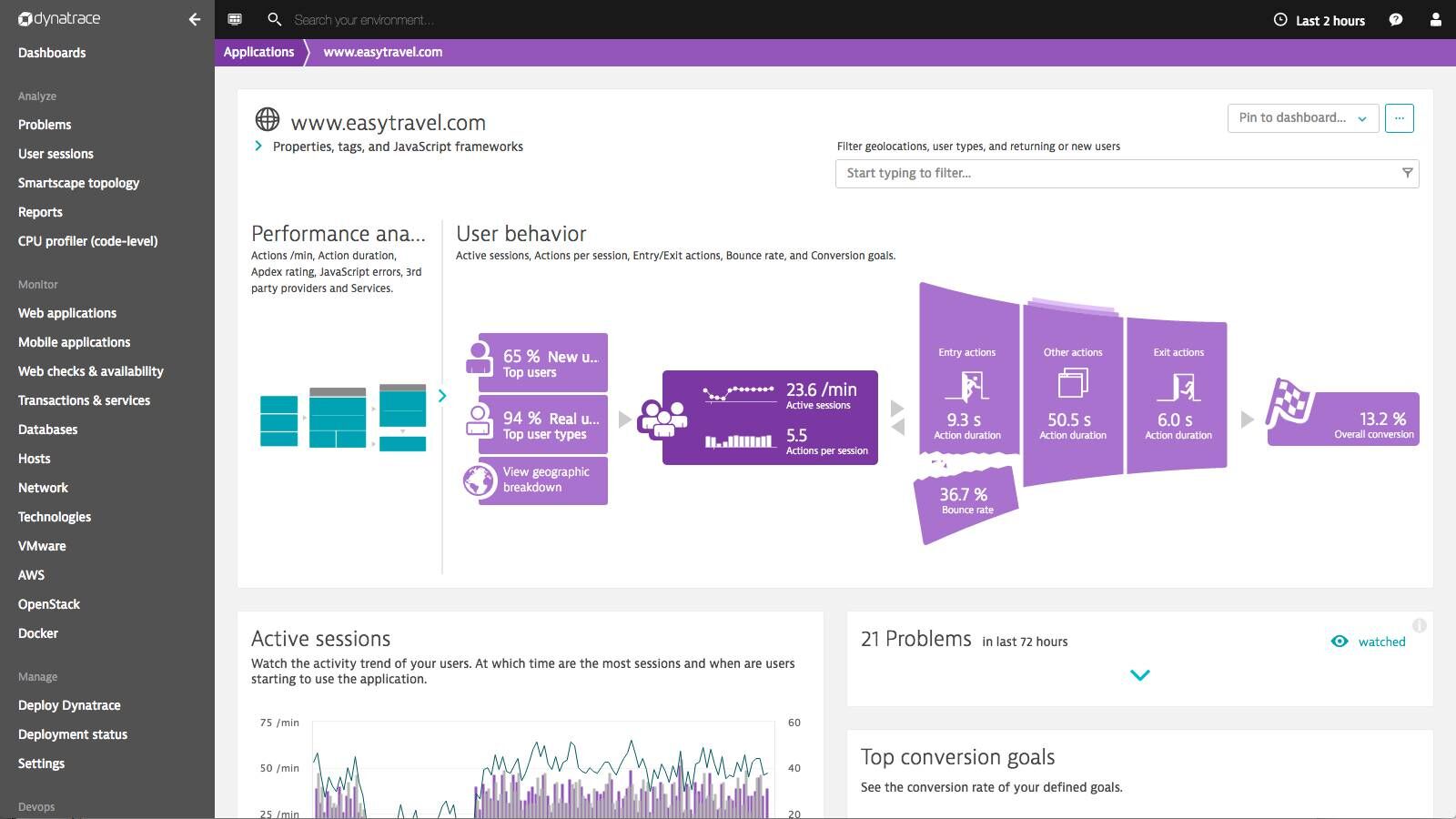
Dynatrace offers an all-inclusive management solution encompassing a range of capabilities for monitoring and managing digital experiences. This platform empowers clients to enhance user experiences across various applications and understand the business implications of each digital interaction. By providing a comprehensive view of user activity across mobile and web applications on all devices and browsers, Dynatrace equips users with real-time, AI-driven analysis of user data. This enables them to evaluate satisfaction levels and identify areas of difficulty.
Pricing: Starts at $11/month. Free trial available.
Want to see how Sematext stacks up? Check out our page on Sematext vs Dynatrace. You should also read about the best alternatives to Dynatrace for the full picture.
3. Datadog
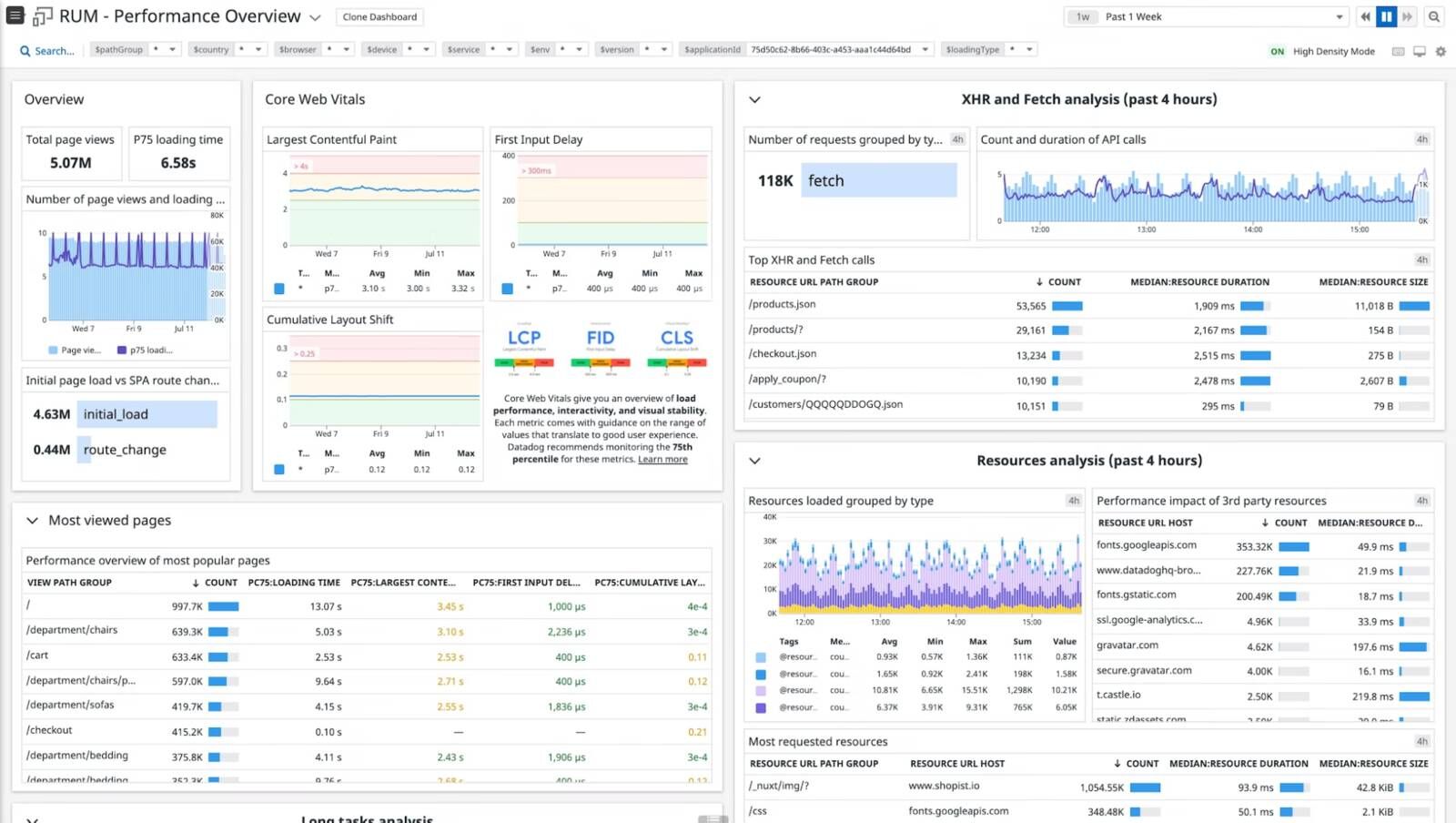
Datadog Synthetics is an all-in-one digital experience management tool that provides comprehensive visibility across the stack. It alerts users about global performance and availability, monitors SLAs, validates HTTP requests, and integrates seamlessly with APM, infrastructure, and logs. Synthetics conducts automated tests to monitor critical business transactions and user journeys, ensuring the preservation of essential user experiences.
Pricing: Starts at $5/month (important: only 10k tests). Free trial available.
Want to see how Sematext stacks up? Check out our page on Sematext vs Datadog. Alternatively, read about the best Datadog alternatives out there.
4. AppDynamics
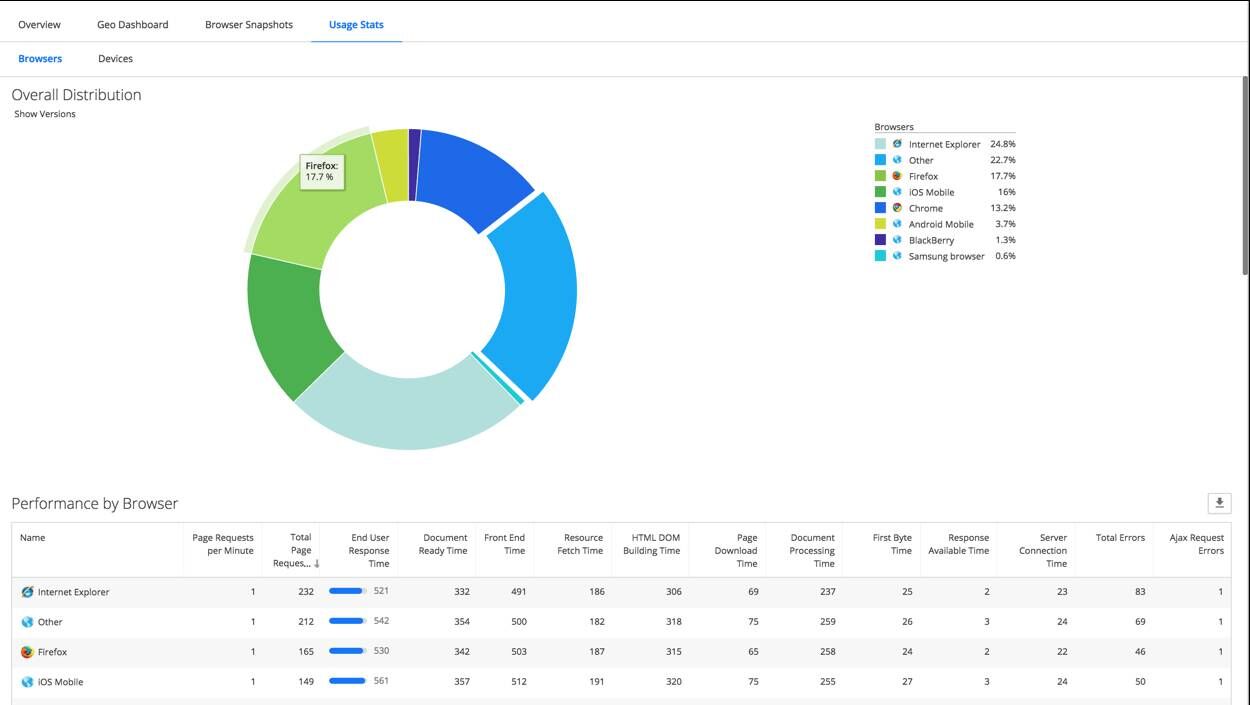
AppDynamics is a leading provider of digital experience management solutions, specializing in end user monitoring (EUM) and business transaction tracking. Their advanced platform empowers users to enhance customer experiences by effortlessly capturing crucial data such as errors, crashes, network requests, and page load information, along with other valuable metrics. With AppDynamics, organizations gain valuable insights into the impact of third-party APIs and content services on end user performance, enabling them to effectively enforce service level agreements (SLAs) and optimize their operations accordingly.
Pricing: $.06/month per 1000 tokens. Free trial available.
Want to see how Sematext stacks up? Check out our page on Sematext vs AppDynamics.
5. SolarWinds Pingdom
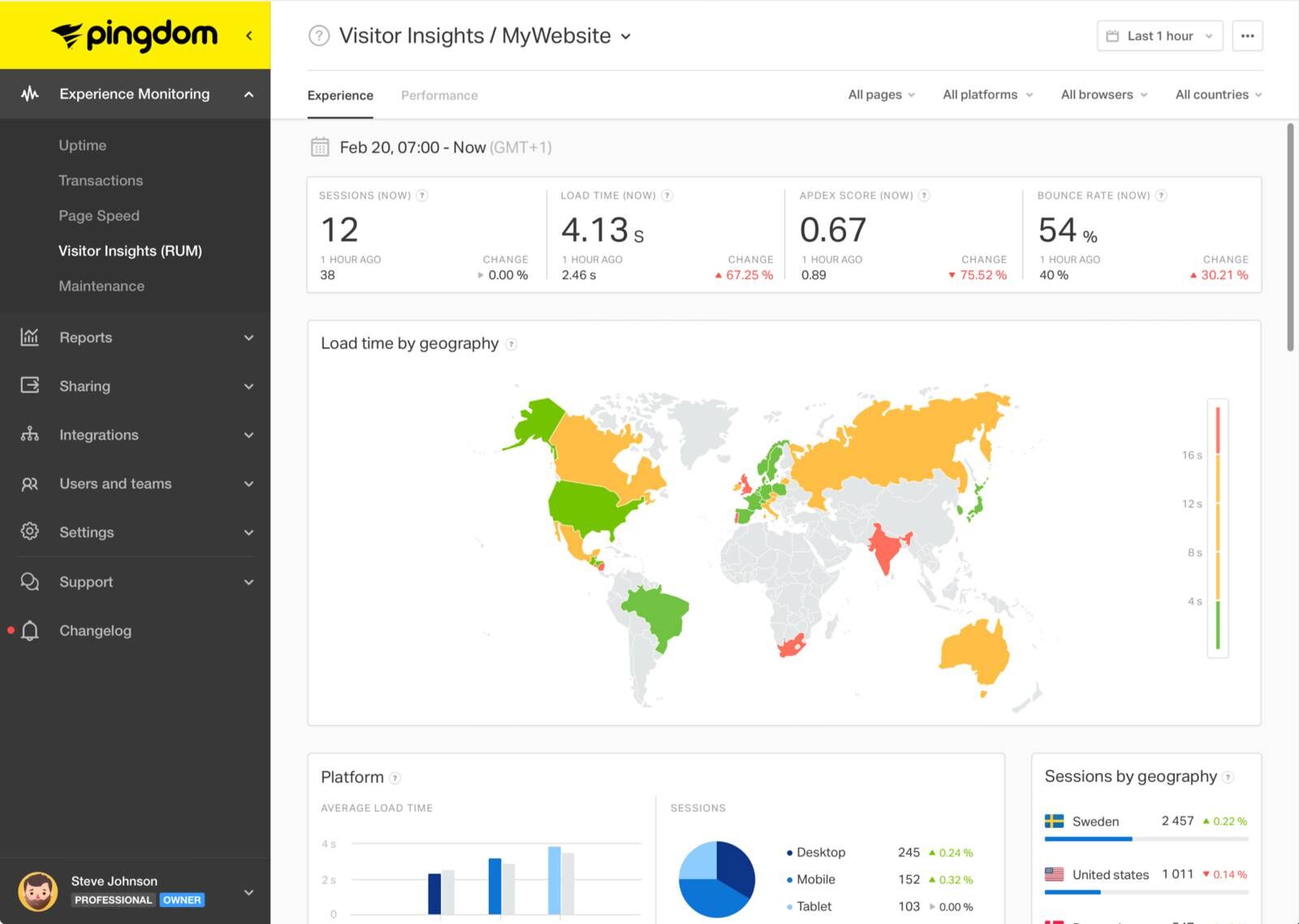
SolarWinds’ Pingdom Digital Experience Monitoring (DEM) tool offers a comprehensive solution for monitoring and optimizing your digital infrastructure. With its user-friendly interface, it provides valuable insights into the performance of your website, allowing you to identify real-time issues that impact user experience. By tracking site traffic and analyzing visitor behavior, you can make informed decisions to enhance conversions and engagement. SolarWinds Pingdom includes essential features like cloud server monitoring, network device scanning, and application response time monitoring. It caters to businesses of all sizes with flexible plans and a free trial option, ensuring that you can explore its capabilities before committing. Whether you’re an IT operations expert or a digital marketer, SolarWinds DEM empowers you with actionable insights and solutions to enhance your digital presence.
Pricing: From $10/month. Free trial available.
Want to see how Sematext stacks up? Check out our page on Sematext vs Pingdom.
6. Splunk
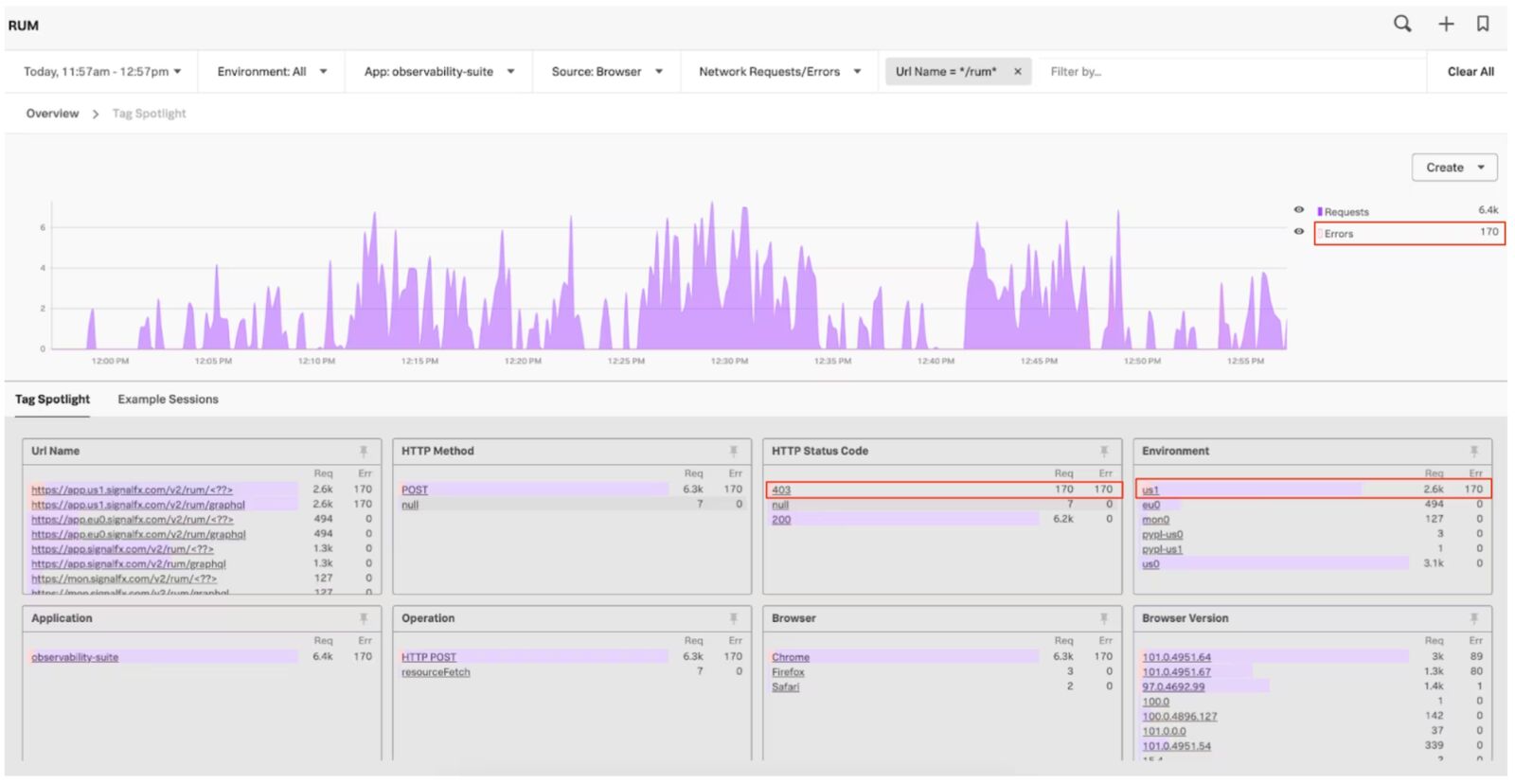
Splunk offers a comprehensive Digital Experience Monitoring (DEM) tool that enables efficient monitoring and optimization of your digital ecosystem. With its user-friendly interface and powerful capabilities, Splunk allows you to gain valuable insights into the performance of your systems and applications, ensuring a seamless user experience. By collecting and analyzing real-time data, Splunk helps you proactively identify and resolve issues that may impact user satisfaction, enabling you to deliver optimal digital experiences. With features such as log management, event correlation, and real-time analytics, Splunk empowers organizations of all sizes to monitor and enhance their digital infrastructure for superior customer engagement and business success.
Pricing: Available by quotation. Free trial available.
Want to see how Sematext stacks up? Check out our page on Sematext vs Splunk.
7. ThousandEyes
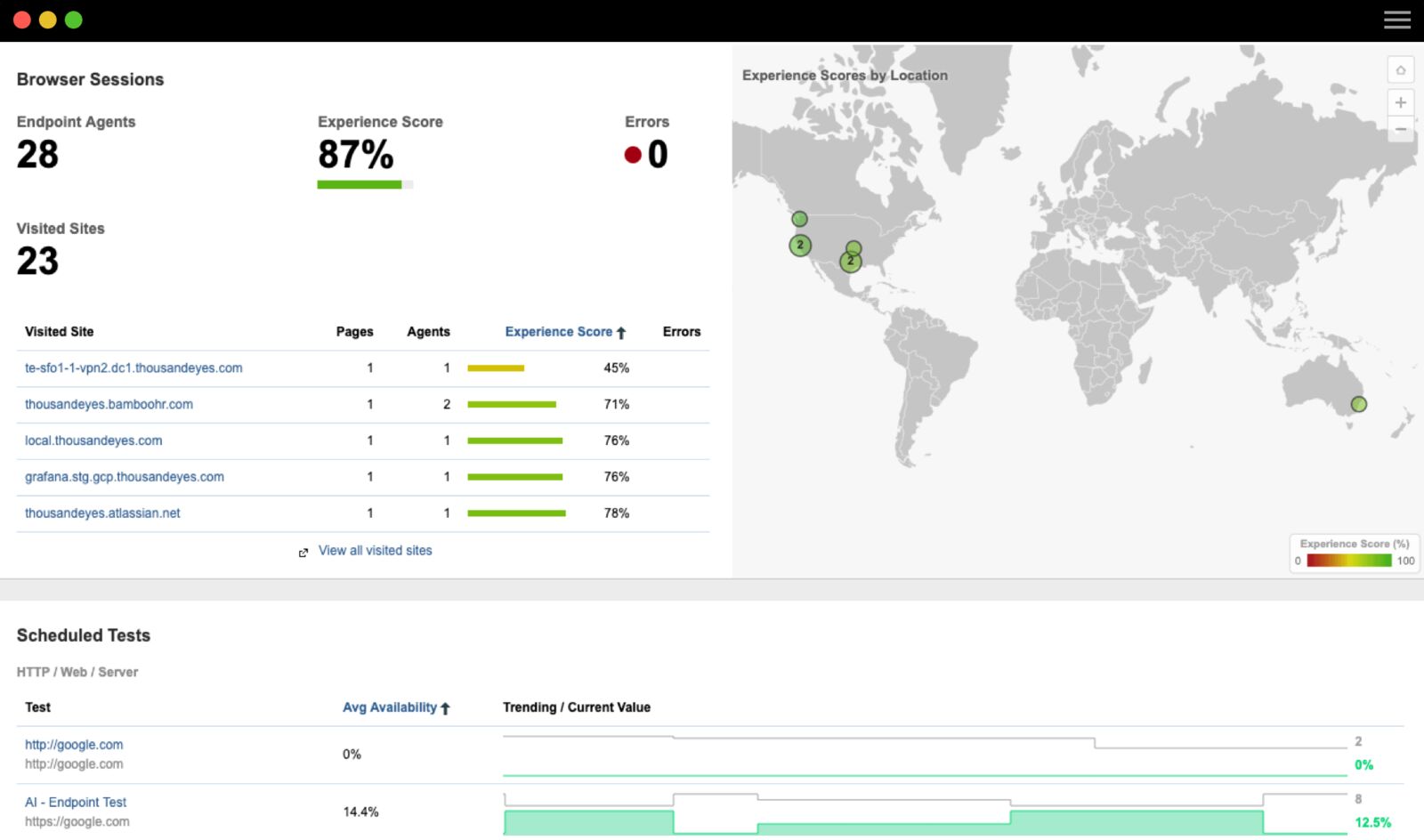
ThousandEyes offer a comprehensive solution for managing digital experiences. It enables users to efficiently diagnose application performance and network connectivity issues by leveraging real-time data from end user laptops and desktops across any browser-based application. By collecting live monitoring data directly from these devices, the Endpoint Agents offer valuable insights into individual user sessions. ThousandEyes excels at identifying and isolating issues that impact multiple users within branch offices, including problems like routing misconfigurations and wireless connectivity issues.
Pricing: Available by quotation. Free trial available.
8. New Relic
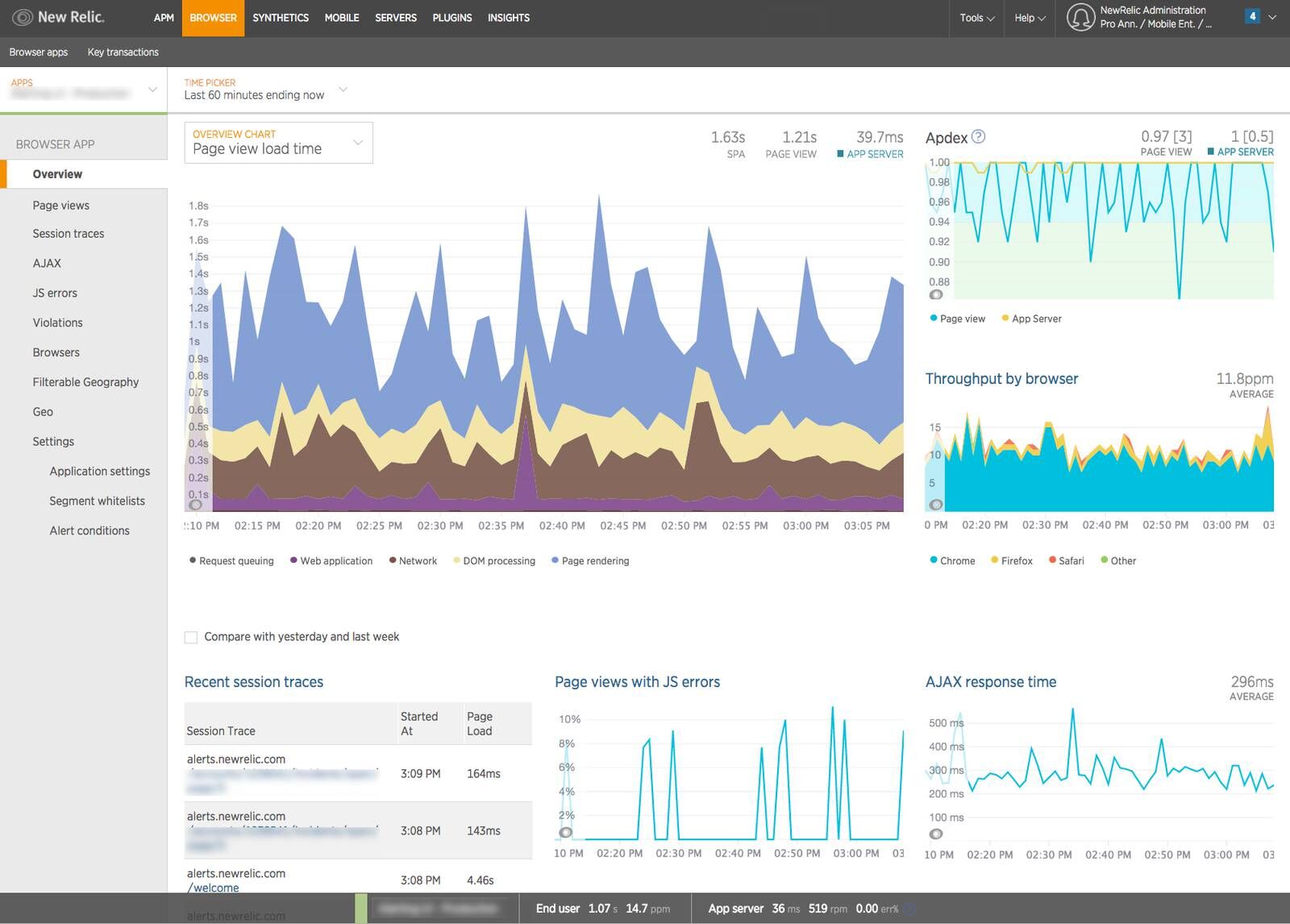
New Relic Synthetics is an advanced tool for managing digital experiences, providing users with the ability to monitor and test applications, proactively addressing any potential issues before they impact end users. This platform guarantees the smooth execution of crucial transactions by offering tailored testing options. With New Relic, troubleshooting metrics are readily available, aiding in the resolution of application problems. Users are promptly notified whenever something goes awry, and New Relic precisely identifies the areas that require attention and fixing. The testing capabilities of New Relic span the entire application and service development lifecycle, from initial stages to testing, deployment, and beyond.
Pricing: From $49/month. Free trial available.
Want to see how Sematext stacks up? Check out our page on Sematext vs New Relic.
9. Micro Focus
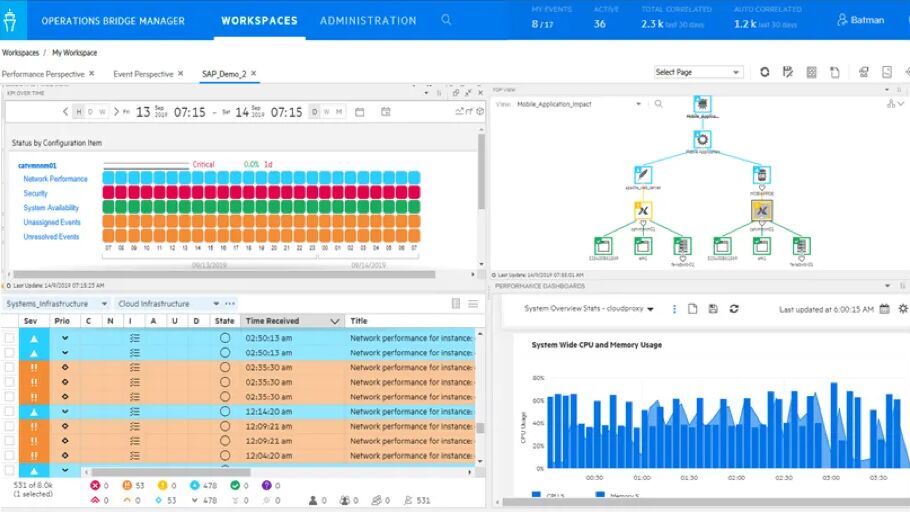
The Micro Focus AppPulse Suite is a comprehensive set of solutions designed to enhance digital experience management, enabling organizations to make informed business decisions and improve user experience (UX). Within the suite, AppPulse Active leverages synthetic monitoring to proactively simulate real user performance and availability, offering valuable insights. AppPulse Mobile effectively tracks the digital user experience, delivering a concise UX score that captures the overall quality. Additionally, AppPulse Web significantly reduces triage time and cost by swiftly identifying availability issues related to web applications. Together, these solutions provide organizations with the necessary tools to optimize UX and make data-driven decisions.
Pricing: Available by quotation. Free trial available.
10. Catchpoint
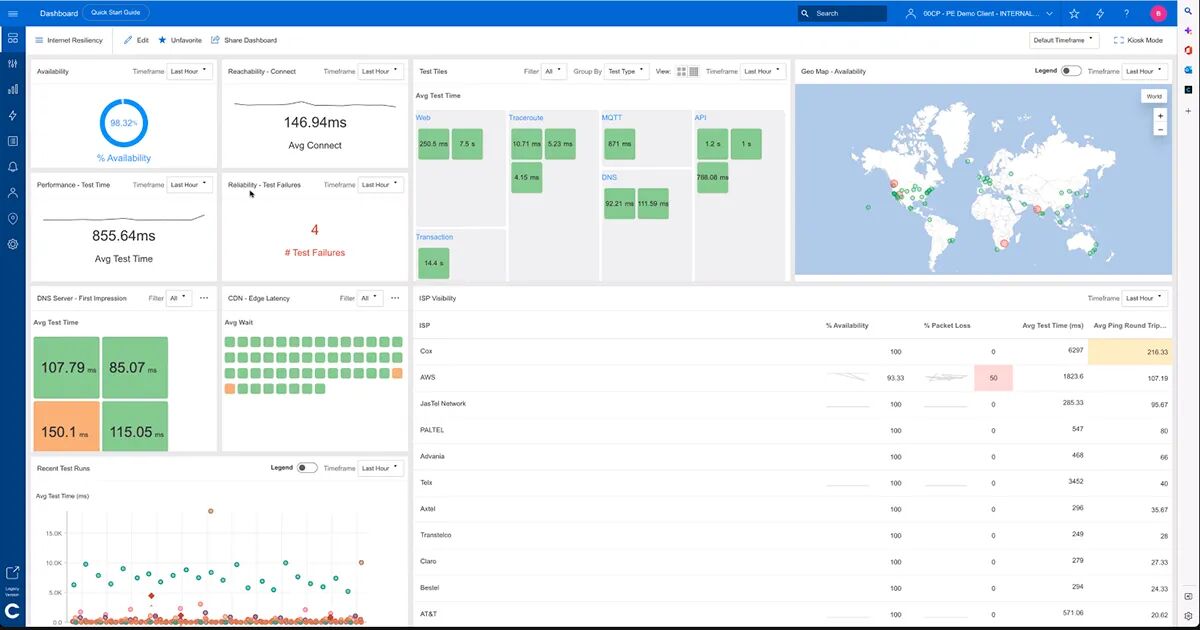
Catchpoint is an advanced platform for digital experience management that focuses on enhancing visibility into end user experiences and swiftly resolving issues. By gathering synthetic and real-user measurements, the platform effectively eliminates blind spots in a user’s infrastructure. It thoroughly tests all components that influence end user experience using pre-built or customized monitors. With Catchpoint, users have the ability to model and validate end user performance, making it ideal for conducting A/B tests for new releases, comparing content delivery network (CDN) vendors, and expanding into emerging markets. This platform empowers organizations to proactively optimize their digital experiences and make data-driven decisions.
Pricing: From $15 for 10K tests. Free trial available.
11. Nexthink
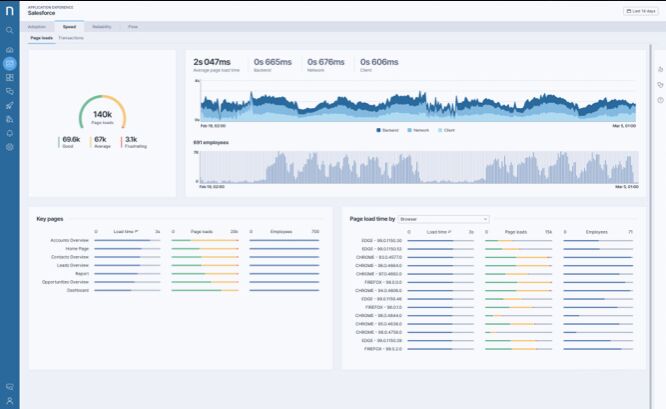
The Nexthink Digital Employee Experience Platform is a cutting-edge solution that prioritizes digital experience management (DEM) for end-to-end employee experience optimization. This platform is specifically designed to measure, monitor, and enhance the digital employee experience comprehensively. By collecting and analyzing real-time data from all endpoints, Nexthink empowers organizations to gain deep insights into employee interactions and identify areas for improvement. The platform also offers automated remediation capabilities, allowing seamless scalability from individual devices to large-scale deployments across thousands of endpoints. With high-level metrics and instant visibility, organizations can drive continuous improvement in their digital employee experience, ultimately boosting productivity and satisfaction. Nexthink is a powerful tool for organizations committed to prioritizing DEM and ensuring optimal employee engagement and performance.
Pricing: Available by quotation.
12. Aternity
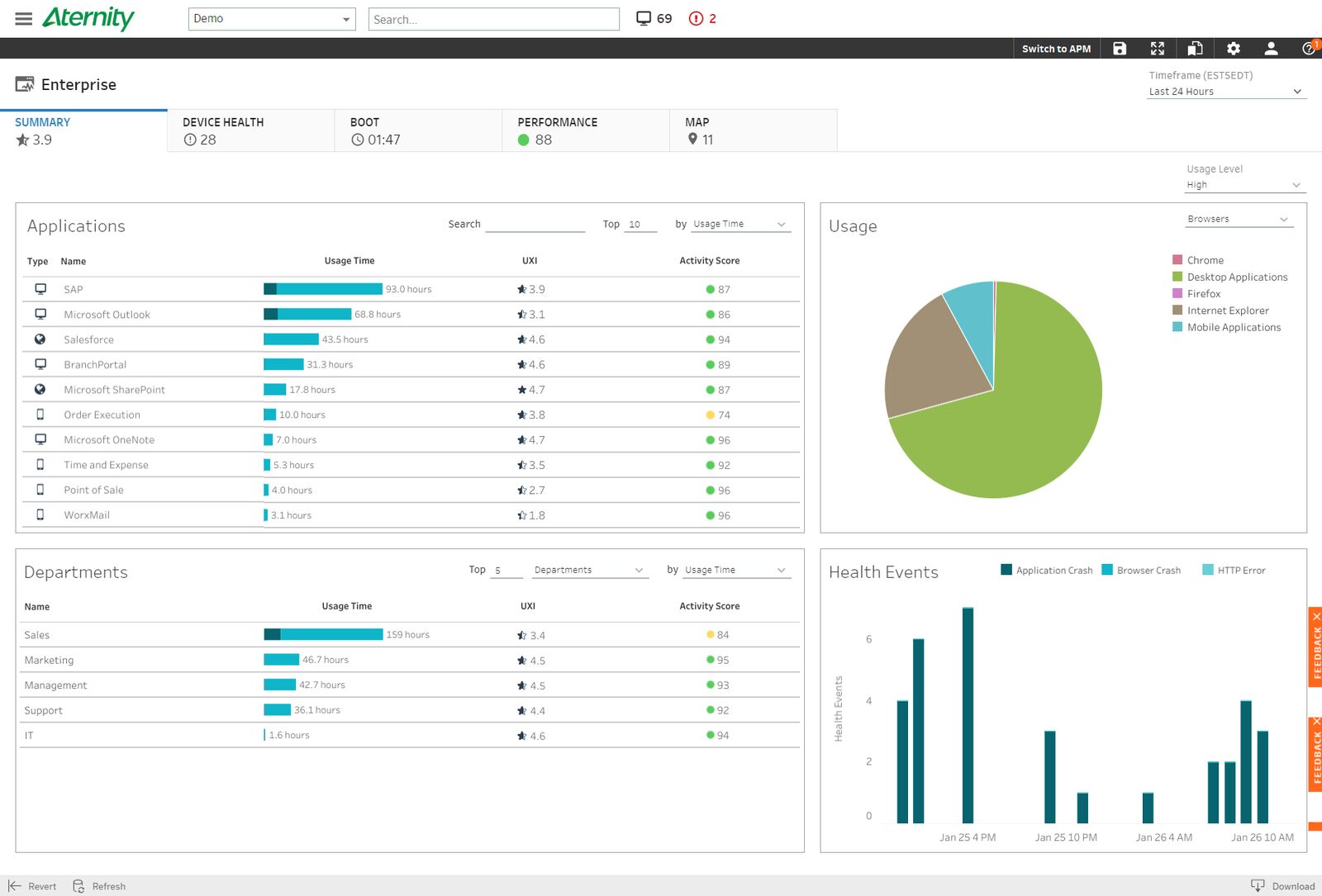
Aternity, a company under Riverbed, specializes in digital experience management, providing valuable insights and visibility into the end user experience of enterprise cloud, SaaS, and mobile applications. Their monitoring solution effectively isolates the root causes of delays, whether they originate from networks, devices, or application backends. By diagnosing and resolving user-impacting issues, Aternity enables organizations to proactively address performance bottlenecks. Furthermore, Aternity tracks usage and experience over time, empowering users to continuously enhance performance and streamline investments. This results in improved customer satisfaction and optimized user productivity. Aternity is a trusted solution for organizations seeking to maximize their digital experiences and drive overall business success.
Pricing: Available by quotation. Free trial available.
Conclusion
Digital experience management (DEM) tools are integral for delivering exceptional user experiences across various channels and touchpoints. Through this comparison page, we have explored and evaluated some of the top DEM tools available in the market.
Each tool has its strengths and weaknesses, addressing different business needs and priorities. When selecting a DEM tool, it is essential to assess specific requirements, such as content management, personalization, testing, scalability, and integration capabilities. Consider factors like ease of use, pricing models, customer support, and overall user satisfaction. Additionally, evaluate the tools’ compatibility with your existing tech stack and their ability to adapt to future needs.
Ultimately, the right DEM tool will empower your organization to create engaging, personalized, and seamless digital experiences that drive customer satisfaction, loyalty, and business growth. Take the time to thoroughly evaluate and compare the available options to make an informed decision that aligns with your unique objectives and long-term digital strategy.